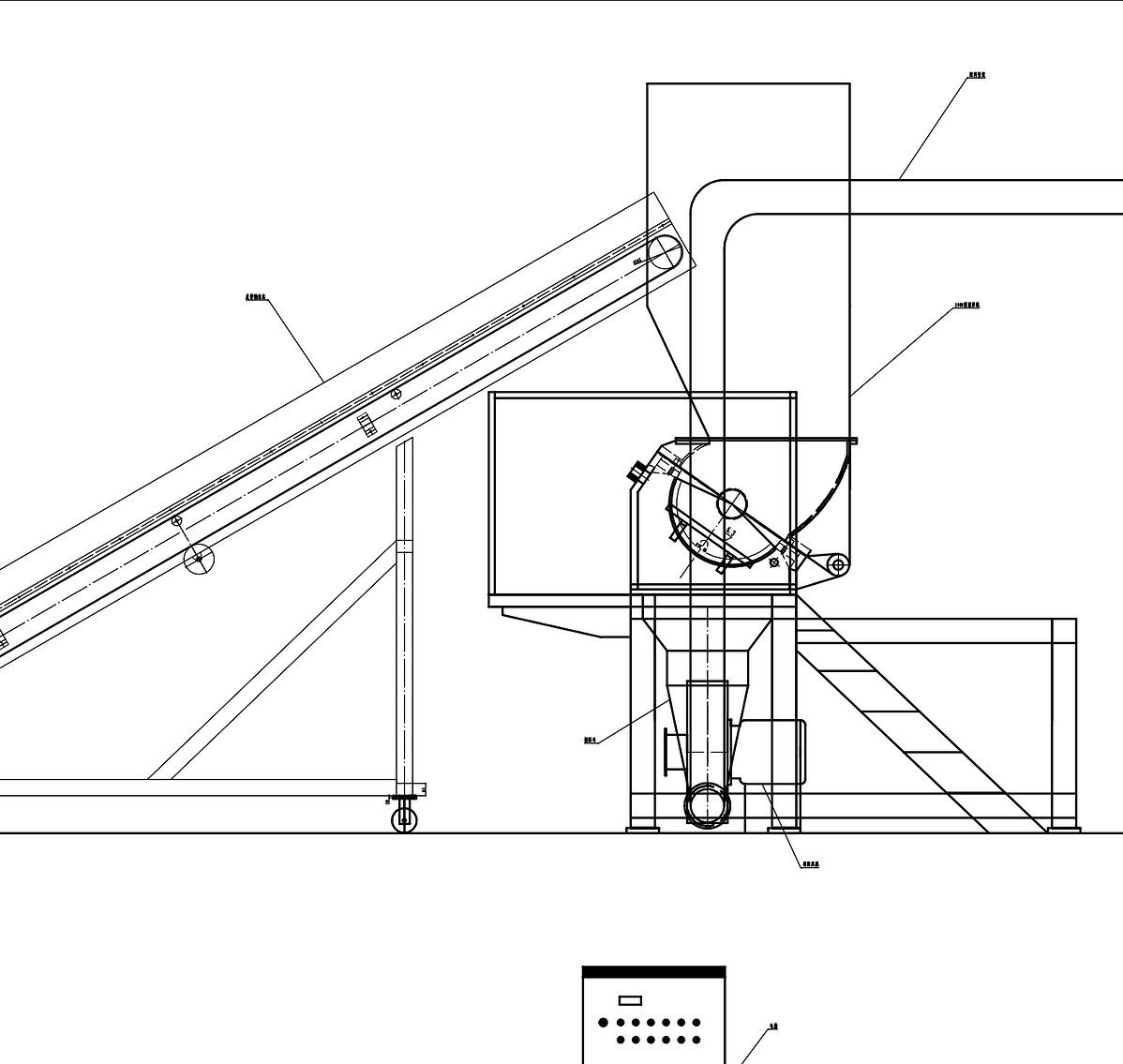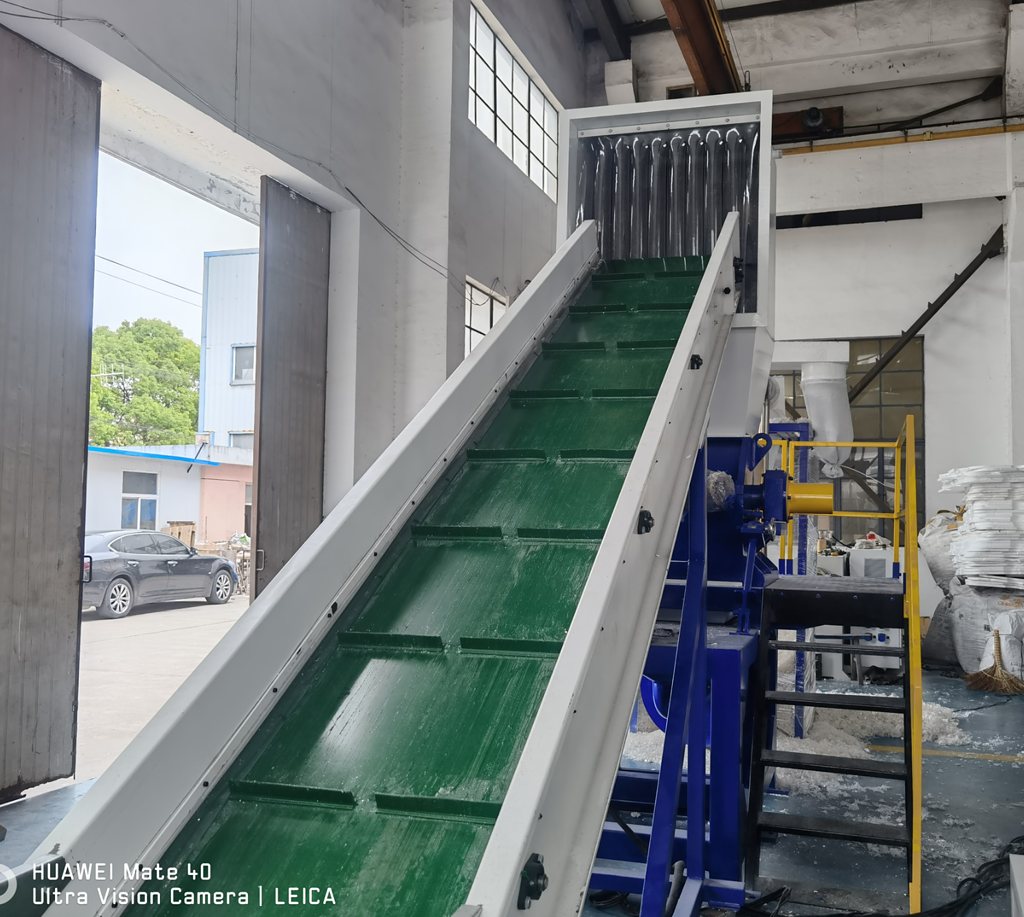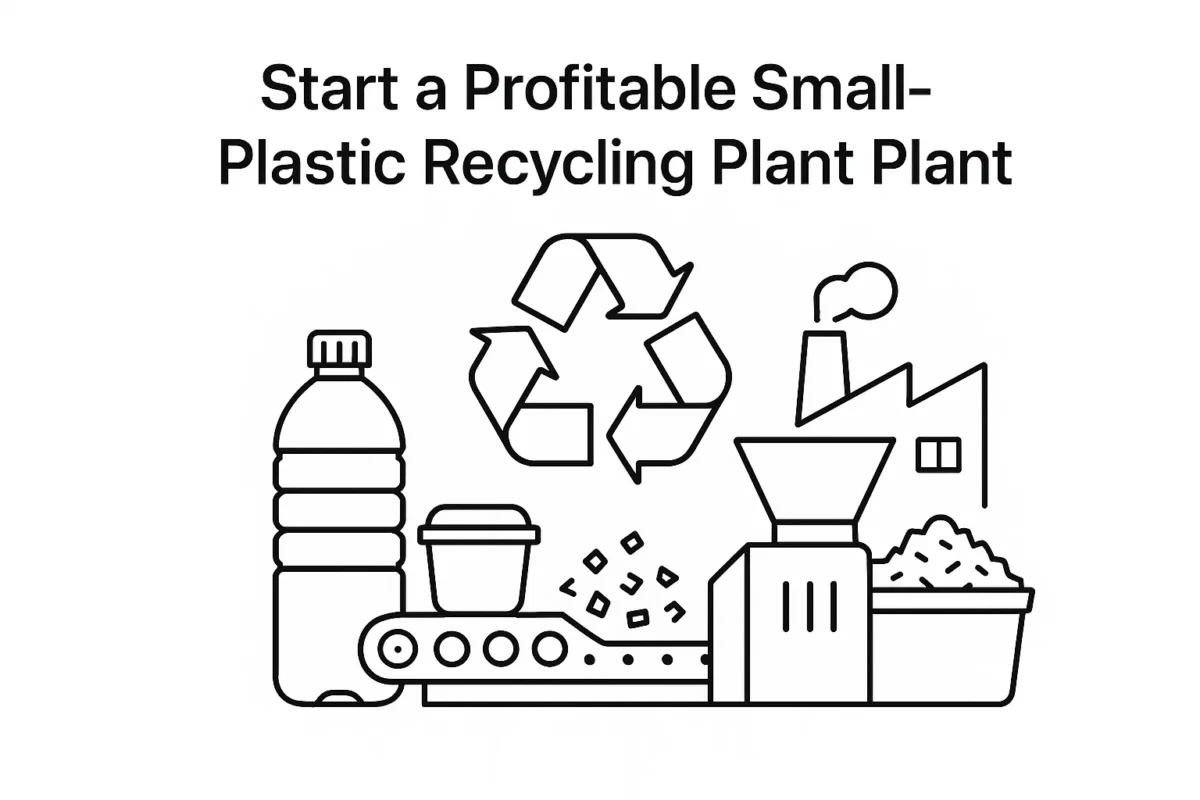Jste zvažující vstup do průmyslu recyklování plastů, ale nevíte, jak začít? Spuštění malého plastového recyklovacího závodu je výkonným a profitabilním podnikem. Tento komplexní vodík vám ukáže klíčové kroky, od výběru správného, Rumtoo Machine do pochopení vašeho ROI. Rozdávač s jedním šroubem Malé závody (obpracující 500-1000 kg/h) poskytují stabilní podnikový model s nižším rizikem. V porovnání s velkými zařízeními můžete snadno přizpůsobit různým zdrojům odpadu - přecházet od.
Proč jsou malé recyklařské závody profitabilní
těžkých plastů na HDPE pípky - minimalizujete náklady na dopravu a maximizujete místní příležitosti.Projektování schématu pro velmi efektivní malý plastový recyklovací řád od Rumtoo Machine.
 Co můžete recyklovat? (Analýza zdrojů)
Co můžete recyklovat? (Analýza zdrojů)What Can You Recycle? (Feedstock Analysis)
Úspěch začíná s výběrem správných materiálů. Naše stroje jsou navrženy k obsluze rozmanitého spektra plastů. Obvyklé profitní typy odpadu zahrnují:
Porozumění kapacity a výstupu
Standardní maloúčelová závoda obvykle zpracovává mezi 500 kg a 1000 kg plastového odpadu za hodinu. Efektivita závisí na hustotě plastu a kvalitě vašich štípátek.
| Měřítko závody | Vstupní odpad (kg/h) | Předpokládaný výstup plátků (kg/h) | Rekomendovaný typ stroje |
|---|---|---|---|
| Začáteční úroveň | 600 | 480 – 500 | Standardní plastový hřídel |
| Profesionální | 1200 | 960 – 1000 | Integrovaný štípáč a granulátor |
Základní zařízení pro profesionální řízenou řadu
Přešli z “zábytku” na “bohatství” potřebujete synchronizovaný systém. Toto jsou klíčové stroje, které jsou vyžadovány:
1. Automatizované přenos (Pásová konveyor)
Slouží k efektivnímu přenosu hmoty z plastových odpadů. Zde je doporučeno použít Metal Detector Ochranný mechanismus.

k ochraně válců zrychlovače před náhodným záchrupem, což značně sníží náklady na údržbu.
2. Hlavní: Plastový zrychlovač nebo jednokovový štíhlý štíhlý štíhlý štíhlý štíhlý štíhlý štíhlý štíhlý štíhlý štíhlý štíhlý štíhlý štíhlý štíhlý štíhlý štíhlý štíhlý štíhlý štíhlý štíhlý štíhlý štíhlý štíhlý štíhlý štíhlý štíhlý štíhlý štíhlý štíhlý štíhlý štíhlý štíhlý štíhlý štíhlý štíhlý štíhlý štíhlý štíhlý štíhlý štíhlý štíhlý štíhlý štíhlý štíhlý štíhlý štíhlý štíhlý štíhlý štíhlý štíhlý štíhlý štíhlý štíhlý štíhlý štíhlý štíhlý štíhlý štíhlý štíhlý štíhlý štíhlý štíhlý štíhlý štíhlý štíhlý štíhlý štíhlý štíhlý štíhlý štíhlý štíhlý štíhlý štíhlý štíhlý štíhlý štíhlý štíhlý štíhlý štíhlý štíhlý štíhlý štíhlý štíhlý štíhlý štíhlý štíhlý štíhlý štíhlý štíhlý štíhlý štíhlý štíhlý štíhlý štíhlý štíhlý štíhlý štíhlý štíhlý štíhlý štíhlý štíhlý štíhlý štíhlý štíhlý štíhlý štíhlý štíhlý štíhlý štíhlý štíhlý štíhlý štíhlý štíhlý štíhlý štíhlý štíhlý štíhlý štíhlý štíhlý štíhlý štíhlý štíhlý štíhlý štíhlý štíhlý štíhlý štíhlý štíhlý štíhlý štíhlý štíhlý štíhlý štíhlý štíhlý štíhlý štíhlý štíhlý štíhlý štíhlý štíhlý štíhlý štíhlý štíhlý štíhlý štíhlý štíhlý štíhlý štíhlý štíhlý štíhlý štíhlý štíhlý štíhlý štíhlý štíhlý štíhlý štíhlý štíhlý štíhlý štíhlý štíhlý štíhlý štíhlý štíhlý štíhlý štíhlý štíhlý štíhlý štíhlý štíhlý štíhlý štíhlý štíhlý štíhlý štíhlý štíhlý štíhlý štíhlý štíhlý štíhlý štíhlý štíhlý štíhlý štíhlý štíhlý štíhlý štíhlý štíhlý štíhlý štíhlý štíhlý štíhlý štíhlý štíhlý štíhlý štíhlý štíhlý štíhlý štíhlý štíhlý štíhlý štíhlý štíhlý štíhlý štíhlý štíhlý štíhlý štíhlý štíhlý štíhlý štíhlý štíhlý štíhlý štíhlý štíhlý štíhlý štíhlý štíhlý štíhlý štíhlý štíhlý štíhlý štíhlý štíhlý štíhlý štíhlý štíhlý štíhlý štíhlý štíhlý štíhlý štíhlý štíhlý štíhlý štíhlý štíhlý štíhlý štíhlý štíhlý štíhlý štíhlý štíhlý štíhlý š Fixed Bucket Single Shaft Shredder for stability or a specialized Pipe Shredder, Rumtoo strojové zařízení využívají optimalizovanou geometrii lžicí k zajištění rovnocenné velikosti plátků s minimálním množstvím prachu.

3. Systém náplně a sběru
Nechtějte, aby rukopisná práce zpomalila vaše procesy. Naše pneumatický systém okamžitě přenese rozbité plátky do skladu, zatímco sběrník zachytí prach a značky, zajistí, že vaše konečné výrobek bude čistý a připravený na trh.
Integrální vizualizace procesu
Když tyto stroje spolu fungují, vytvářejí řádku recyklování:

Cenová hodnota: kam se vaše plátky dostanou?
Proč je tento podnik přínosný? Protože poptávka po recyklovaném materiálu vzrůstá rychle. Vaše zpracované plátky jsou prodávány výrobci k výrobě:
- Polyesterové vlákna: Využívána v oblečení a textilech.
- Stavební materiály: Recyklovaný PVC pro kanály a podlahy.
- Nové obalové materiály: rPET pro lahve a obaly pro potraviny.
- Granulace: Vrácení šupin zpět do granulátů pro injekční formování.
Výhody Rumtoo: Analýza ROI a efektivity
Ne všechny stroje poskytují stejný výnos z investice. Tady je, jak technologie Rumtoo zlepšuje vaši finanční výsledky v porovnání s obecným zařízením:
| Měření výkonu | Obecné zařízení | Optimalizované řešení Rumtoo |
|---|---|---|
| : Optujte za systémy navržené k minimalizaci spotřeby energie bez ohledu na kvalitu výstupu. | Vysoký spotřebič energie | Energeticky úsporný design motora |
| Doba života nožů | Časté ošetřování potřebné | Třídní nástrojová hmotnost (Dlouhá životnost) |
| Flexibilita | Soustředění na jednom materiálu | Personalizovatelné (Optiky + Granulátorové možnosti) |
Často se ptané otázky (FAQ)
| | |
Zahájení malé skladby plastového recyklování je možné a efektivní způsob, jak se zapojit do cyklické ekonomiky. Fokus na efektivitu, kvalitu a tržní poptávku vám umožní vytvořit trvale trvalou podnikání.
Jste připraveni začít? Nepodnikajte na své základní stroje. Společně s námi získáte vysokokvalitní řešení pro šrotování a recyklování. Rumtoo Machine Získejte vlastní design recyklovací linie.
Podívejte se na naše materiály (HDPE, PET, filmy, nebo tvarohodnotné) a určete si svůj cílový kapacitní rozsah.
Požádejte o nabídku dnes.
Request A Quote Today
